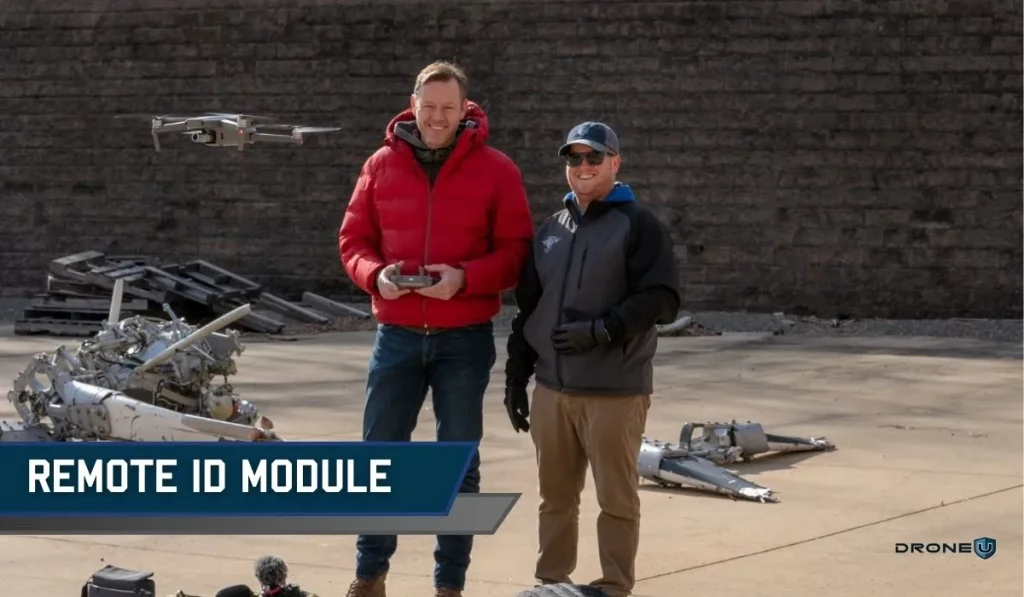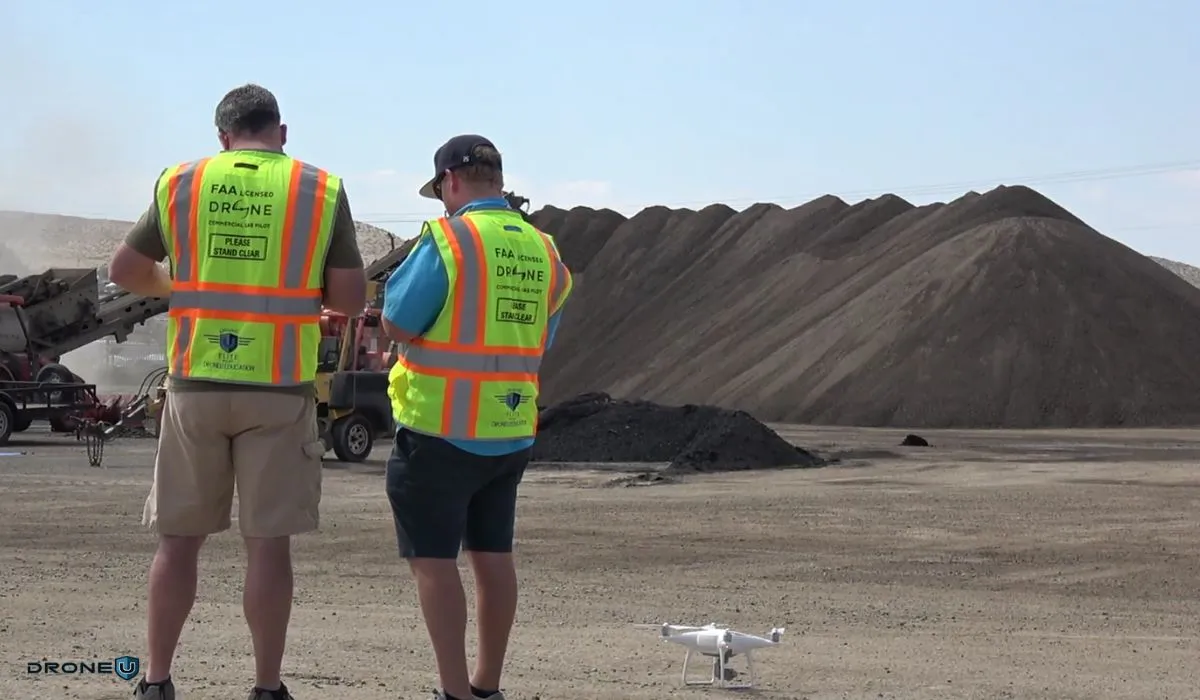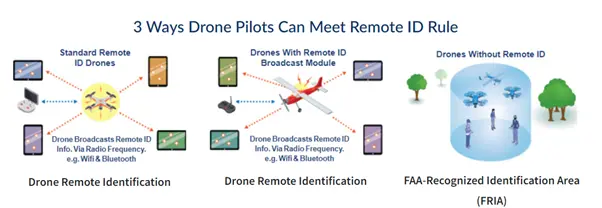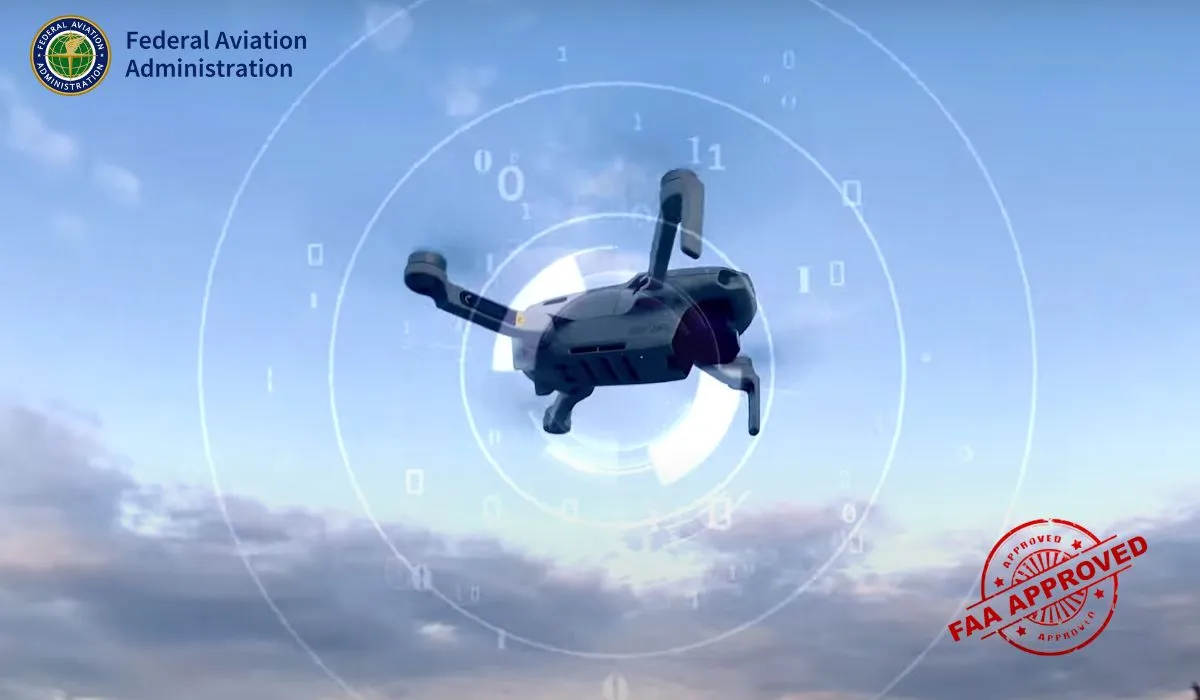
The drone revolution has taken the world by storm, but with great flying power comes great responsibility, and sometimes, a few regulations. One of the latest additions to the drone pilot’s handbook is Remote ID.
As drones become increasingly embedded in our daily lives, from photography and delivery to agriculture and defense management, the need for the efficiency of the detection system has never been greater.
This guide will be your copilot, explaining what Remote ID is, why it matters, distinguishing features from Session ID, and how to ensure your drone is ready to take flight.
What is Remote ID?
Watch this video to learn how to legally bypass Remote ID requirements
Imagine a world where every car broadcasted its license plate information for everyone to see. That’s what Remote ID does for drones!
Remote ID refers to a system designed to provide identification and location information of drones in flight to other parties. It acts as a digital drone license plate, providing essential details like the drone’s ID, location, altitude, and operator information.
Drones with Remote ID capability transmit identification and location data via a broadcast signal, allowing reception by other parties.
In the next section, we’ll delve deeper into why Remote ID is important and how it contributes to a safer and more enjoyable drone flying experience for everyone.
Why Do We Need a Remote ID for Drones?
Remote ID establishes an essential safety and security framework required for advanced drone operations. It also assists the FAA, law enforcement, and other federal agencies in pinpointing the control station when a drone is observed flying in a hazardous manner or in restricted airspace.
The necessity for a Drone Remote ID arises from several key factors:
- Monitoring Air Traffic: Aids in monitoring and managing increasing drone traffic, reducing the risk of air collisions.
- Identifying Risks: Remote ID assists in identifying unauthorized or suspicious drone activities in sensitive areas.
- Promoting Accountability: By linking the drone’s ID to its registered owner, it encourages responsible drone use and adherence to regulations.
That being said, let’s dive into the background of Remote ID and how it came into existence.
Remote ID Background
The concept of Remote ID for drones didn’t emerge overnight. It’s the culmination of years of discussions, technological advancements, and a growing need for safer and more organized airspace.
Regulatory bodies like the Federal Aviation Administration (FAA) in the United States have been at the forefront of developing standards for Drone Remote ID. These regulations are designed to integrate drones safely into the national airspace, laying the groundwork for advanced drone applications like beyond visual line of sight (BVLOS) operations.
The FAA’s Notice of Proposed Rulemaking (NPRM) regarding the Remote Identification of Unmanned Aircraft Systems was issued on December 31, 2019.
Over the 60-day comment period that followed, the FAA received more than 53,000 comments on the NPRM. The FAA thoroughly reviewed all these comments, and they were taken into account in developing the final rule.
The final rule, available in PDF format, was officially published in the Federal Register on January 15, 2021, initially set to become effective on March 16, 2021.
However, corrections to the rule were made and published in the Federal Register on March 10, 2021, leading to a delayed effective date of April 21, 2021.
There has been some confusion surrounding Remote ID and Session ID in the Drone community. So, we’d like to clarify that in the section below and help you understand the nuances of each.
How Session ID is Different from Remote ID

Let’s begin by clarifying what Session ID is.
While the Remote ID is a broad concept for drone identification, Session ID is a specific type of Remote ID.
In the future, those operating Standard Remote ID drones might have the option to broadcast either their drone’s ID (Remote ID-compliant serial number) or a Session ID.
The FAA is in the process of formulating a plan for assigning Session IDs to drone pilots, taking into account current policies during the development of the Session ID policy.
The primary difference lies in the information shared and privacy considerations:
|
Remote ID |
Session ID |
| It includes persistent identification of the drone and its operator. This means that the drone’s ID is always linked to its registered owner. | Session ID offers more privacy by linking a unique identifier to each session, without revealing the long-term identity of the operator to the public. |
It is important to note that this Session ID still allows the drone to be tracked and identified during that session, but it doesn’t directly reveal the long-term identity of the operator to the public.
However, this capability won’t be accessible to the public. The FAA plans to gather public input on the Session ID policy before making it final.
The first step to becoming Remote ID ready is finding out if your drone is compliant or not.
How to Ensure Your Drone is Remote ID Compliant

Source: FAA
With the importance of Remote ID established, let’s dive into the practical steps you can take to ensure your drone is compliant and ready for legal flight. Here’s what you need to know:
Step 1: Identify Your Drone
The first step is to determine if your drone is already Remote ID compliant. Many newer drone models, especially those weighing over 250 grams, come equipped with this technology.
Your drone’s user manual should explicitly mention if it has a built-in Remote ID or Broadcast ID.
Some manufacturers offer firmware updates that enable Remote ID on older drone models. Visit the manufacturer’s website and see if an update is available for your specific drone.
Step 2: Explore External Broadcast Modules
If your drone lacks a built-in Remote ID and cannot be updated, you might need an external Remote ID broadcast module. These handy devices attach to your drone and transmit the required identification and location data. Research compatible broadcast modules for your specific drone model and follow the installation instructions carefully.
Step 3: Register Your Drone
Drone registration is a separate requirement from Remote ID, but it’s still crucial.
Check out this link to learn the process of drone registration. This registration process links your drone’s unique ID with your personal information, ensuring traceability and accountability.
Step 4: Stay Informed
The world of drone regulations is constantly evolving. Stay informed by checking your local aviation authority’s website for any updates or changes to Remote ID regulations.
How to be Remote ID Ready

Drone pilots have three ways drone pilots can meet the identification requirements of the Remote ID rule:
1. Operate a Standard Remote ID Drone
Use a drone with built-in Remote ID broadcast capabilities that comply with the requirements of the Remote ID rule. It broadcasts identification and location information of the drone and control station. These Standard Remote ID drones come pre-equipped with the necessary features.
2. Operate a drone with a Remote ID broadcast module
The broadcast module can be added to a drone to retrofit it with Remote ID capabilities. A broadcast module is a device that broadcasts identification and location information about the drone and its take-off location in accordance with the Remote ID rule’s requirements. Pilots using a drone with a Remote ID broadcast module must maintain visual contact with their drone throughout the flight.
3. Operate without Remote ID equipment at FAA-recognized identification areas (FRIAs)
In areas sponsored by community-based organizations (CBOs) or educational institutions that are recognized by the FAA, drone pilots can operate without Remote ID equipment. These FAA-recognized identification areas (FRIAs) are the only locations where unmanned aircraft systems (UAS), including drones and radio-controlled airplanes, may operate without broadcasting Remote ID message elements.
Final Thoughts
Wrapping it up, Drone Remote ID is kind of a big deal in our increasingly crowded skies. As the air traffic gets busier, keeping tabs on who’s who up there is a necessity for our safety.
But, here’s the kicker – privacy is hanging in the balance. Will it be a win for drone pilots? Well, that’s the million-dollar question, and honestly, nobody’s got the crystal ball on this one.
Feel free to share your thoughts in the comments.
Frequently Asked Questions
1. Which Drones Must Comply With Remote ID?
All drones must adhere to the Remote ID rule if they are either required to be registered or have already been registered. This applies whether the drone is flown for recreation, business, or public safety purposes.
2. Where can I buy a Remote ID module? How much does it cost?
Remote ID modules are available in two types: Non-Self-Contained and Self-Contained.
Non-Self-Contained modules, which do not have a built-in power source and are designed to be integrated into the aircraft, start at around $40.
Self-Contained modules, which have built-in power sources and antennas, range from about $130 to $300. Examples of such modules include the AeroPing and the BlueMark DB120 Beacon for self-contained modules, and the Hex Cube ID for non-self-contained modules.
3. Can I fly without Remote ID in the United States?
In general, drones that need to be registered are required to comply with Remote ID requirements. However, drones can be flown without Remote ID equipment in defined geographic areas known as FAA-Recognized Identification Areas (FRIAs).
4. Who can see data broadcasted from my drone?
The data from Remote ID can be received by anyone with the proper equipment, such as a specific device or a mobile app, as long as they are within the range of the drone’s Remote ID broadcast.
5. Who is responsible for mandating Remote ID in the USA?
The Federal Aviation Administration (FAA) is responsible for mandating Remote ID in the United States. The FAA’s rule on Remote ID is part of their broader efforts to integrate drones safely and securely into the National Airspace System (NAS). Remote ID is essential for identifying drones in flight and locating their control stations, particularly when a drone is flying in an unsafe manner or restricted areas.







Add Your Comment